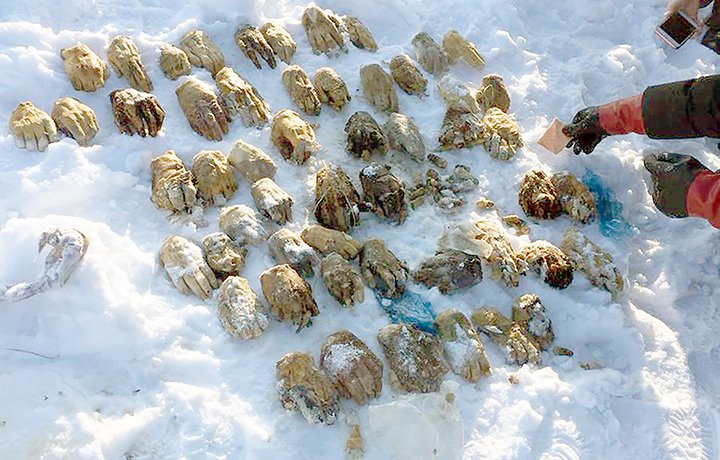A mysterious bag containing 54 severed human hands found in Russia
Russian police launched an investigation after a mysterious bag of 54 severed human hands was discovered at a popular fishing place near the Siberian city of Khabarovsk, the Siberian Times reports.
In Siberia, a fisherman made a gruesome discovery walking along a riverbank last week: A bag containing 27 pairs of human hands, severed at the wrist.
But according to the Russian government, it’s not the work of a hand-obsessed killer, but a forensics laboratory, which – erk – was improperly disposing of its biowaste.
According to The Siberian Times, the fisherman initially spotted just one hand peeking out of the snow as he walked by the Amur River in the southeastern Russian city of Khabarovsk.
That discovery led the fisherman to the nearby bag, which also contained medical bandages and plastic shoe coverings commonly used in clean facilities such as laboratories and hospitals.
Initially, the provenance of the 54 hands was unknown, but the Investigative Committee of The Russian Federation acted swiftly and determined their origin was a Khabarovsk-based forensics laboratory.
“The biological objects (hands) found are not of a criminal origin, but were disposed of in a manner not provided for by law,” the Committee wrote in a post on Telegram Messenger in Russian.

It’s not known why the laboratory severed the hands in the first place. Sometimes hands and feet are the only parts of the deceased recovered, although the sheer quantity in the bag makes that explanation seem unlikely.
The removal may have also been for identification purposes, a practice that is not unheard of. Controversially, back in 1989, a UK coroner severed the hands of 25 disaster victims to record fingerprints before deterioration could set in. But those were extreme circumstances, and the decision attracted significant ire.
Besides, fingerprints can definitely be taken and stored without requiring the hand to be severed from the body.
Russian authorities are conducting an investigation into the incident to find out all of the circumstances surrounding the incident. They’ve only been able to obtain just one set of prints from the hands, but the lab itself will likely yield more information.
“Based on the audit results, a legal assessment will be made of the actions of officials of the forensic medical institution in the city of Khabarovsk responsible for the disposal of these biological objects,” the Investigative Committee wrote.





